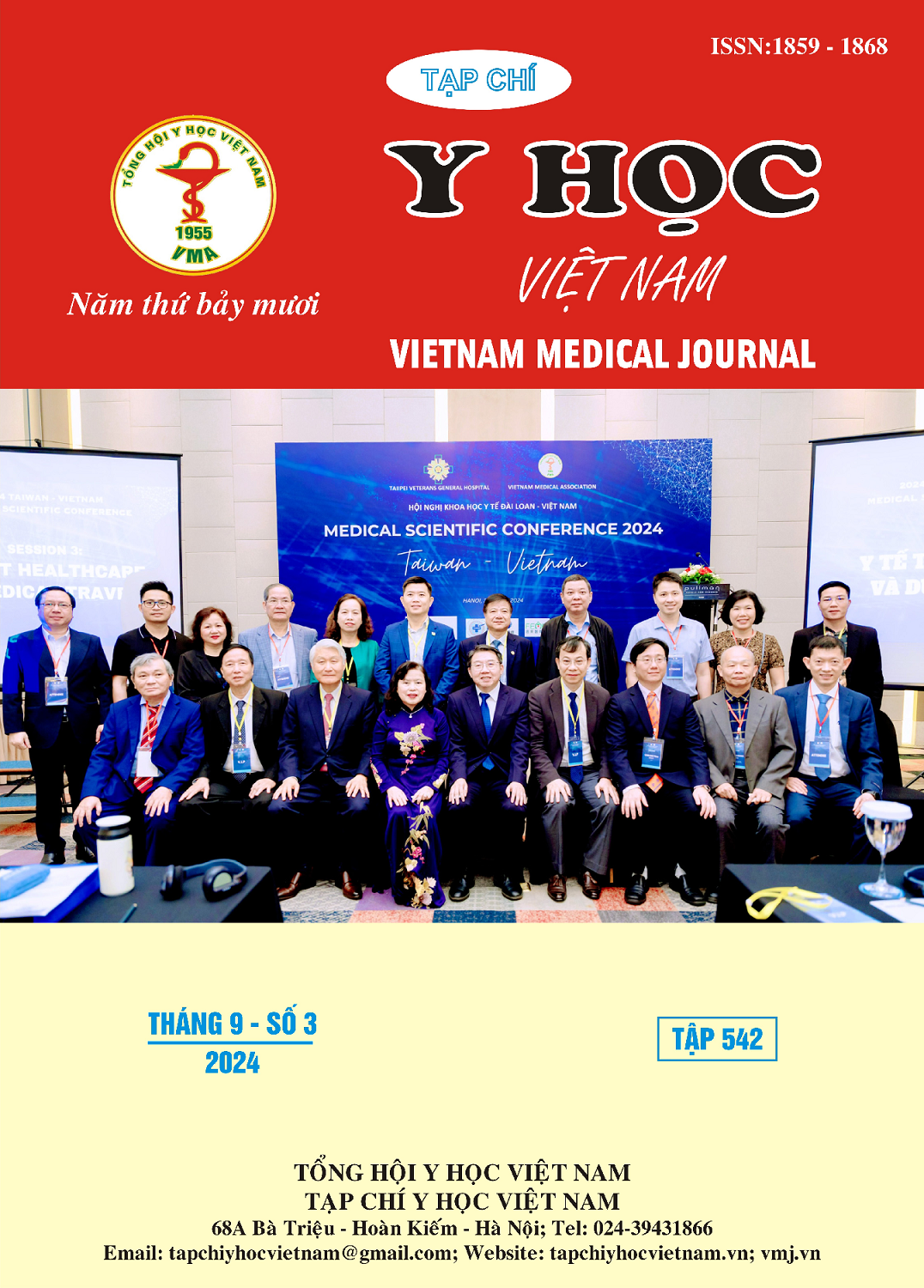THE CURRENT STATUS OF LIPID DISORDER TREATMENT IN PATIENTS WITH TYPE 2 DIABETES MELLITUS AT THE OUTPATIENT CLINIC OF THE ENDOCRINOLOGY DEPARTMENT, BACH MAI HOSPITAL
Main Article Content
Abstract
The treatment of lipid disorders in patients with type 2 diabetes mellitus is crucial for reducing the risk of cardiovascular diseases and enhancing the effectiveness of treatment. Objective: To describe the current status of lipid disorder treatment in patients with type 2 diabetes mellitus at the outpatient clinic of the Endocrinology Department, Bach Mai Hospital. Subjects and methods: A cross-sectional descriptive study conducted on 311 patients with type 2 diabetes mellitus from September 4, 2023, to September 15, 2023. Results: 79.7% of the patients were at very high cardiovascular risk. The proportion of patients with HbA1c <7% was 32.5%, and those with fasting blood glucose levels ranging from 4.4 to 7.2 mmol/L was 42.1%. Atorvastatin and Rosuvastatin were the most commonly used drugs for treating lipid disorders, with usage rates of 47.1% and 38.1%, respectively. The proportion of patients achieving LDL-C targets according to cardiovascular risk stratification was 35.7%. Conclusion: Statins are the most commonly used drug group in the treatment of lipid disorders in patients with type 2 diabetes mellitus. 35.7% of patients achieved the LDL-C target according to cardiovascular risk stratification.
Article Details
Keywords
dyslipidemia, type 2 diabetes.
References
2. Kamrul-Hasan ABM, Alam MS, Zarin N, et al. Prevalence and patterns of dyslipidemia among lipid-lowering drug-naïve patients with type 2 diabetes mellitus – A countrywide study in Bangladesh. Endocr Metab Sci. 2023;13:100152. doi:10.1016/j.endmts.2023.100152
3. Sarfraz M, Sajid S, Ashraf MA. Prevalence and pattern of dyslipidemia in hyperglycemic patients and its associated factors among Pakistani population. Saudi J Biol Sci. 2016;23(6):761-766. doi:10.1016/j.sjbs.2016.03.001
4. Cholesterol Treatment Trialists’ (CTT) Collaborators, Kearney PM, Blackwell L, et al. Efficacy of cholesterol-lowering therapy in 18,686 people with diabetes in 14 randomised trials of statins: a meta-analysis. Lancet Lond Engl. 2008;371(9607):117-125. doi:10.1016/ S0140-6736(08)60104-X
5. Mach F, Baigent C, Catapano AL, et al. 2019 ESC/EAS Guidelines for the management of dyslipidaemias: lipid modification to reduce cardiovascular risk: The Task Force for the management of dyslipidaemias of the European Society of Cardiology (ESC) and European Atherosclerosis Society (EAS). Eur Heart J. 2020;41(1):111-188. doi:10.1093/eurheartj/ehz455
6. Nguyễn Văn Sĩ, Trần Xuân Trường, Võ Thành Duy, Nguyễn Thị Thu Thuỷ, Phạm Dung, Đỗ Thức. Tỉ lệ đạt mục tiêu LDL cholesterol theo khuyến cáo của Hội tim Châu Âu 2019 trên người bệnh có nguy cơ tim mạch cao và rất cao. Tạp Chí Học Cộng Đồng. 2022;63. doi:10.52163/yhc.v63i4.368
7. Nguyễn Giang Phúc Khánh, Đặng Duy Khánh. Đánh giá kết quả kiểm soát LDL-C trong sử dụng thuốc điều trị rối loạn lipid máu và một số yếu tố liên quan trên người bệnh điều trị ngoại trú tại Cần Thơ. Tạp Chí Học Việt Nam. 2023;525(1B). doi:10.51298/vmj.v525i1B.5147
8. Lê Thị Lan Anh. Thực trạng điều trị rối loạn lipid máu theo phân tầng nguy cơ tim mạch ở người bệnh đái tháo đường typ 2 tại bệnh viện Đại học Y Hà Nội. 2023.
9. Hội nội tiết - Đái tháo đường Việt Nam. Khuyến Cáo về Chẩn Đoán và Điều Trị Bệnh Đái Tháo Đường.; 2018.


